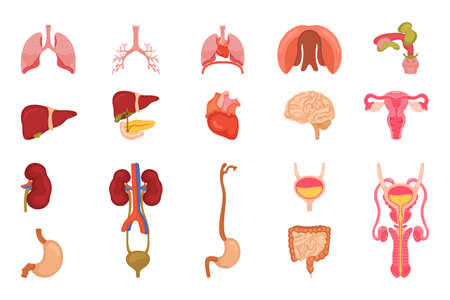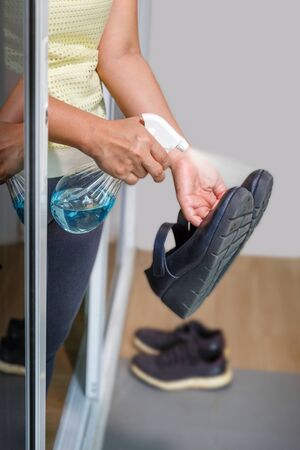Introduction to Pediatric Orthopedic Rehabilitation
Pediatric orthopedic rehabilitation is a specialized area of healthcare that focuses on helping children recover from injuries, congenital conditions, or surgeries that affect their bones, joints, and muscles. Unlike adults, children are still growing and developing both physically and emotionally. This means their rehabilitation needs are unique, requiring careful consideration of their age, growth patterns, and family environment.
Overview of Pediatric Orthopedic Conditions
Children can experience a variety of orthopedic conditions. Some may be present at birth, while others result from injuries or illnesses. Common pediatric orthopedic conditions include:
| Condition | Description | Examples |
|---|---|---|
| Congenital Disorders | Conditions present at birth that affect bones or joints | Clubfoot, Hip Dysplasia, Scoliosis |
| Traumatic Injuries | Injuries caused by accidents or falls | Fractures, Dislocations, Sprains |
| Neuromuscular Disorders | Conditions affecting muscle control and movement | Cerebral Palsy, Muscular Dystrophy |
| Growth-related Issues | Problems related to bone growth and development | Limb Length Discrepancy, Osgood-Schlatter Disease |
The Rehabilitation Process for Children
The rehabilitation process for pediatric orthopedic conditions usually involves a team approach. Physical therapists, occupational therapists, doctors, nurses, and sometimes psychologists work together to create a personalized treatment plan. The main goals are to help the child regain strength, mobility, and independence in daily activities.
Key Steps in Pediatric Orthopedic Rehabilitation:
- Assessment: Understanding the child’s condition, medical history, and family situation.
- Treatment Planning: Setting realistic goals that match the child’s abilities and family needs.
- Therapy Sessions: Providing exercises and activities designed to improve movement and function.
- Family Education: Teaching parents and caregivers how to support the child at home.
- Ongoing Monitoring: Adjusting the treatment plan as the child grows or recovers.
The Unique Needs of Children and Families in Rehab
Pediatric rehabilitation is not just about physical recovery—it’s also about supporting the emotional well-being of both the child and their family. In American culture, families often play an active role in their child’s care. Parents may need guidance on how to help with exercises at home or manage medical equipment. Siblings might also need support as the family adjusts to new routines.
| Unique Needs of Children | Unique Needs of Families |
|---|---|
| – Age-appropriate communication – Play-based therapy – Motivation and encouragement – Adjustments for school activities – Peer interaction support |
– Education about condition – Training in home care techniques – Emotional support resources – Coordination with schools – Community resource connections |
The Family’s Central Role in Successful Rehabilitation
The involvement of family members is essential throughout the rehabilitation journey. In many cases across the United States, families act as advocates for their child—communicating with healthcare providers and ensuring that therapy continues at home. When families are empowered with knowledge and resources, children are more likely to reach their fullest potential during recovery.
2. The American Family Dynamic in Pediatric Care
Understanding Diverse Family Structures
In the United States, the concept of family is broad and inclusive. Families come in many shapes and sizes, from traditional nuclear families to single-parent households, blended families, and families with same-sex parents. Each type of family brings unique strengths and challenges to pediatric orthopedic rehabilitation.
| Family Structure | Description | Potential Impact on Rehab |
|---|---|---|
| Nuclear Family | Two parents and their children living together | Consistent support, often easier communication between caregivers and providers |
| Single-Parent Family | One parent raising one or more children | May face time or resource constraints, but can be highly adaptive and resourceful |
| Blended Family | Parents with children from previous relationships forming a new unit | Potential for increased support network, but may have complex dynamics to navigate |
| Extended Family Involvement | Grandparents, aunts, uncles actively helping with care | Larger support system, helpful for transportation and supervision of exercises |
| LGBTQ+ Parent Families | Families headed by same-sex couples or LGBTQ+ individuals | Diverse perspectives; may encounter unique social or systemic challenges but often strong advocacy for the child’s needs |
The Role of Family in Pediatric Orthopedic Rehabilitation Outcomes
No matter the structure, family involvement is crucial in supporting a child through orthopedic rehabilitation. American culture emphasizes parental advocacy and teamwork with healthcare professionals. Families are often expected to help children adhere to treatment plans, attend therapy sessions, and motivate them during home exercises.
How Family Involvement Makes a Difference:
- Consistency: Families help ensure that daily routines like stretching or using assistive devices become habits.
- Mental Support: Emotional encouragement from loved ones can boost a childs confidence and willingness to participate in therapy.
- Communication: Families serve as a bridge between medical teams and the child, sharing concerns and progress updates.
- Problem-Solving: When barriers arise—such as difficulties attending appointments—families work with providers to find solutions that fit their circumstances.
- Cultural Sensitivity: Understanding each familys values helps providers offer care that respects beliefs about disability, healing, and independence.
Key Takeaway:
Pediatric orthopedic rehabilitation in the U.S. is not just about the child; its truly a family-centered process. Recognizing and valuing each familys unique structure allows healthcare teams to partner more effectively with families for better outcomes.

3. Cultural Values and Beliefs Impacting Family Participation
Understanding the Influence of Culture on Rehabilitation
Culture plays a big role in how families participate in pediatric orthopedic rehabilitation. Different beliefs about disability, healthcare, and child independence can shape how families engage with rehab programs, make decisions, and support their children. In the United States, there is a wide variety of cultural backgrounds, so understanding these differences is important for providing effective care.
Cultural Attitudes Toward Disability
Families’ views about disability can affect their willingness to seek help and participate in therapy. Some cultures may see disability as something to be hidden or as a family matter, while others are more open to outside support. This influences whether families feel comfortable sharing information with medical professionals or getting involved in community resources.
| Attitude Toward Disability | Possible Family Response | Impact on Rehab Participation |
|---|---|---|
| Disability seen as a stigma | May avoid seeking outside help | Lower engagement with rehab team |
| Disability accepted openly | More likely to join support groups and therapies | Higher participation in rehab process |
| Belief in self-reliance | Might try to handle issues within family only | Less collaboration with healthcare providers |
Cultural Views on Healthcare and Medical Authority
Some families trust doctors and therapists fully and follow instructions closely. Others may prefer traditional remedies or question medical advice based on past experiences or cultural beliefs. Providers need to recognize these perspectives and work together with families to find common ground.
Examples of Healthcare Perspectives:
- Mainstream American culture: Tends to value evidence-based medicine, clear communication, and shared decision-making.
- Other cultural groups: May prioritize holistic care, religious practices, or advice from extended family members.
Cultural Approaches to Child Independence
The level of independence expected from children varies by culture. In some American families, encouraging kids to do things on their own is seen as important for development. In other cultures, parents may take a more protective approach, limiting what the child does independently during rehabilitation. These differences affect how goals are set and which rehab activities are prioritized at home.
| Cultural Value | Approach to Child Independence | Effect on Rehab Activities at Home |
|---|---|---|
| Encouraging independence early | Children practice exercises alone or with minimal help | Faster skill development, greater confidence in child |
| Prioritizing family involvement and protection | Parents closely supervise or assist most activities | Slower progress toward independent skills but strong family support network |
The Importance of Open Communication and Respect for Diversity
Pediatric rehab teams in the US aim to understand each familys background and beliefs. By listening carefully and respecting different values, therapists can build trust and work together with families to create effective treatment plans that honor both cultural preferences and clinical needs.
4. Practical Strategies for Effective Family Involvement
Empowering and Educating Families: Evidence-Based Approaches
In pediatric orthopedic rehabilitation, families play a central role in supporting their child’s recovery. Research shows that when families are empowered with the right tools and knowledge, children have better outcomes both physically and emotionally. Here are some practical, evidence-based strategies that help families get involved in the rehabilitation process:
Family-Centered Care Models
Family-centered care is a proven approach that recognizes parents and caregivers as key partners in a child’s treatment team. This model emphasizes open communication, shared decision-making, and respect for each family’s unique values and culture.
| Key Elements of Family-Centered Care | How It Helps |
|---|---|
| Active participation in goal setting | Ensures rehab goals match family priorities and daily routines |
| Collaborative care planning | Makes sure everyone understands the plan and their role in it |
| Cultural sensitivity | Respects diverse backgrounds and traditions, which increases trust and engagement |
| Ongoing education for families | Keeps families informed about treatments, home exercises, and progress updates |
Utilizing Community Resources
Connecting families to local resources can make rehabilitation easier and more effective. In the U.S., there are many organizations, support groups, and services designed to assist children with orthopedic conditions and their families.
| Resource Type | Examples & Benefits |
|---|---|
| Rehabilitation Centers & Outpatient Clinics | Offer specialized therapies close to home; often provide educational workshops for parents |
| Support Groups (in-person or online) | Let families share experiences, tips, and emotional support with others facing similar challenges |
| School-based Services | Help coordinate therapy with school activities; can arrange accommodations like physical therapy during school hours or adaptive equipment in classrooms |
| Community Recreation Programs | Inclusive sports or adaptive recreation options promote socialization and physical activity outside of clinical settings |
| Pediatric Advocacy Organizations (e.g., Shriners Hospitals for Children, Parent to Parent USA) | Provide information, financial assistance, and advocacy for children’s health rights and needs |
Best Practices for Communication with Families
Effective communication between healthcare providers and families is essential for successful pediatric orthopedic rehabilitation. Using clear language, being culturally sensitive, and encouraging questions all help build strong partnerships.
Tried-and-True Communication Tips:
- Use plain language: Avoid medical jargon. Explain terms simply so everyone understands the plan.
- Create a welcoming environment: Invite parents to share their thoughts or concerns without judgment.
- Check for understanding: Ask families to repeat instructions in their own words to confirm clarity.
- Culturally responsive care: Be aware of cultural preferences around touch, gender roles, or traditional healing practices.
- Regular check-ins: Schedule follow-up calls or messages to answer questions that may come up after appointments.
5. Challenges and Opportunities in American Pediatric Rehabilitation
Common Barriers Faced by Families
Families play a vital role in pediatric orthopedic rehabilitation, but they often encounter various challenges that can make the process more difficult. In the United States, several barriers are especially common:
| Barrier | Description | Impact on Rehabilitation |
|---|---|---|
| Socioeconomic Factors | Limited financial resources, parents working multiple jobs, or lack of transportation. | Missed appointments, inconsistent therapy, stress for both child and caregivers. |
| Language Differences | Families who speak languages other than English may have trouble understanding medical instructions. | Poor communication with healthcare providers, misunderstandings about care plans. |
| Insurance Coverage | Complex insurance rules or lack of coverage for certain therapies or equipment. | Delays in receiving care, increased out-of-pocket costs, reduced access to needed services. |
Opportunities for Support and Advocacy
Despite these challenges, there are also many opportunities for families to find support and become advocates for their children:
- Community Resources: Many local organizations offer financial assistance, transportation help, or free language interpretation services for families in need.
- Family Support Groups: Connecting with other families who have similar experiences can provide emotional support and practical advice.
- Education and Empowerment: Hospitals and clinics often host workshops to teach parents how to navigate insurance systems and communicate effectively with healthcare teams.
- Advocacy Programs: National groups like the Family Voices network help parents advocate for better policies and improved access to care at both local and federal levels.
Navigating Insurance and Financial Assistance
If a family is struggling with insurance issues or costs, social workers or patient advocates within hospitals can help explain options such as Medicaid, Children’s Health Insurance Program (CHIP), or hospital charity programs. Parents should not hesitate to ask for these resources—they exist to make care accessible for every child.
Cultural Sensitivity in Care
Cultural backgrounds can influence how families view disability, treatment options, and the role of rehabilitation. Healthcare providers in the U.S. are increasingly trained to respect these perspectives, work with interpreters when needed, and include family members as active partners in care decisions. Open communication between families and care teams helps create a supportive environment where every child can succeed in their rehab journey.


